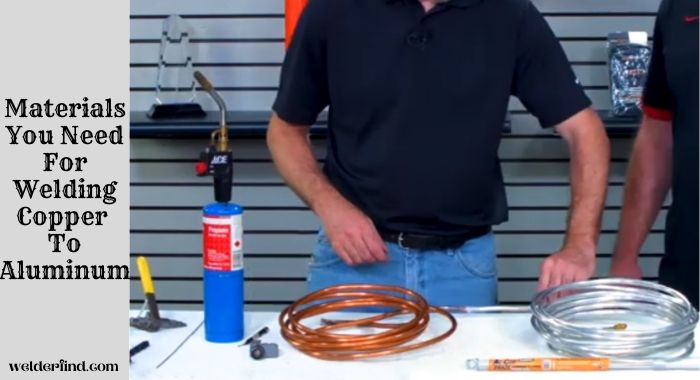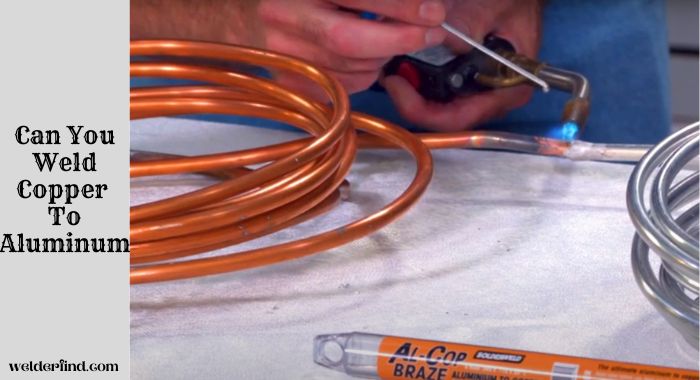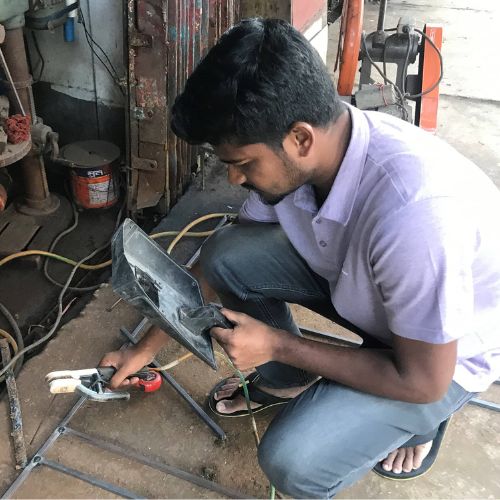Welding copper to aluminum is challenging but possible with the proper techniques, tools, and skillset. Whether you are a skilled welder, a beginner, or a DIYer, it can be a daunting task.
That’s why choosing the right tools and processes is crucial.
With the proper techniques, the process will feel pretty straightforward. In this write-up, we will be talking about the best way to weld copper to aluminum, the materials needed for the process, and things you should consider while welding these two dissimilar metals.
So, let’s get right in.
Can Aluminum And Copper Be Welded Together?
As you already know, welding aluminum and copper is possible, and the process is called dissimilar metal welding. It is a process that involves two different types of metal welding together.
The process is more complex than welding two identical types of metals and requires a great deal of skill and experience.
Dissimilar metal welding is done with a weld pool, a combination of the two metals melted together. Then the weld pool is cooled and solidified to create a bond between the two metals.
But it isn’t easy because aluminum and copper have different melting points.
The other challenge of welding these two metals is that aluminum and copper have different expansion rates as they are heated.
So, you must ensure a consistent temperature range to ensure the two metals melt and join properly.
You have to use special techniques to mitigate these challenges, such as using the right welding wire, filler materials, and proper temperature in the weld pool to reduce the stress on the joint.
Materials You Need For Welding Copper To Aluminum

When welding copper to aluminum, there are several materials that you will need. Let’s see what they are:
- Firstly, you must clean aluminum and copper workpieces free of grease, dirt, or oil.
- Then, of course, you will need a welding machine that has the ability to join two dissimilar metals.
- You will need a welding wire. It usually depends on what type of welding machine you are using. But the typical options are copper-aluminum wire and copper-aluminum tungsten electrodes.
- A pair of welding clamps are also required to hold the workpieces together while welding.
- Protective gear like a welding shield or a mask is a must to protect your face and eyes while welding. You may also need a pair of welding gloves to protect your hands from heat.
Which Welding Method Is Best For Joining Copper And Aluminum Together?
Welding dissimilar materials like copper and aluminum with the traditional method, such as stick welding, is impossible. We know that copper and aluminum have different melting points.
Copper starts melting at 1085°C, but aluminum melts at 660.3°C.
That’s why you cannot join these two metals using the traditional welding process. Again, it is also pretty challenging to weld copper and aluminum using fusion welding processes like MIG and TIG welding.
That is because these two metals have different compositions and expansion rates.
So, what process is best for joining copper and aluminum? The answer is the Friction Stir Welding process or FSW. It is a solid-state welding process that uses a non-consumable tool to join two pieces of metal by applying heat and pressure.
Most importantly, the FSW does not require any filler material and thus can join two different types of metals.
It is a reasonably easy process that begins with the two materials clamped together. Then the FSW tool is heated to over 700°C Celsius and applied to the joint.
After that, the tool is moved along the joint length, generating heat and pressure. As a result, the two pieces of metal become plasticized and start flowing together. Eventually, they cool down and solidify, forming a solid joint.
How To Weld Copper To Aluminum
The friction Stir Welding process, also known as FSW, requires a great deal of skill and expertise to weld two metals like aluminum and copper successfully.
But most importantly, you have to know the welding process.
Here is the step-by-step process of FSW for joining copper and aluminum:
- Firstly, prepare the materials and clean the surfaces of your workpieces with a wire brush or sanding paper.
- Then, clamp the aluminum and copper workpieces in a proper jig to ensure they remain steady in the same position during the welding process.
- Now, you have to set the welding parameters for your welding task. The suitable parameters for FSW of copper and aluminum will depend on the alloy and thickness of these two metals.
- After setting the parameters, it’s time to insert the friction stir welding tool into the joint between the workpieces.
- Now, you have to start the welding process. You have to set the welding tool to rotate at a constant speed and plunge at a constant rate.
- Take a magnifying glass and monitor the welding process. Make sure the join is welding correctly.
- When welding completes, allow the joint to cool correctly before removing the clamp.
- Finally, check the joints for any defects using non-destructive testing methods. It will tell you about the integrity of the joint.
What To Consider While Welding Copper To Aluminum?
There are several things you must consider while welding copper and aluminum. Being dissimilar materials, it already requires different welding processes.
So, you should be extra careful when the process starts. Let’s see some important facts to consider in this process:
- You must use the correct welding techniques to weld aluminum and copper. In this case, you have to use the FSW process.
- Clean the surfaces of both metals before starting welding. Make sure both are free of dirt, grease, oil, and other contaminants.
- Always keep the rotating speed and temperature constant to solidify the joint.
- Never use TIG, MIG, or other fusion and traditional welding processes to weld aluminum and copper.
Final Thought
In conclusion, using the Friction Stir Welding process, you can weld aluminum and copper. But you must rigorously follow the right process for a strong and reliable joint.
Follow the safety instructions very carefully while the welding process.

